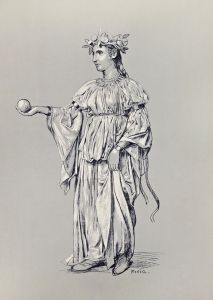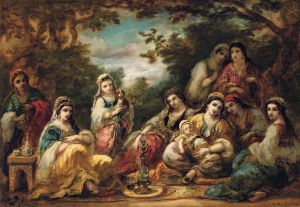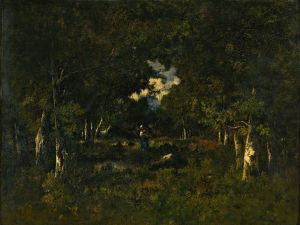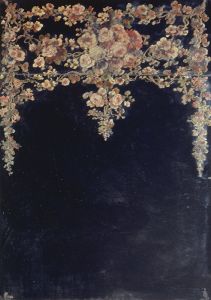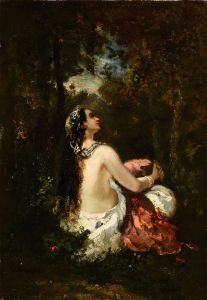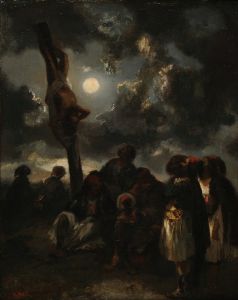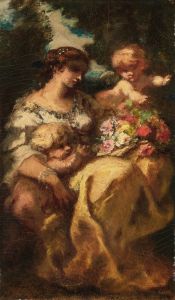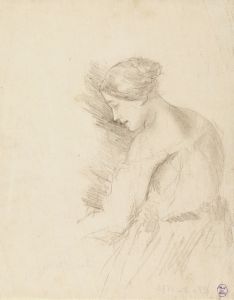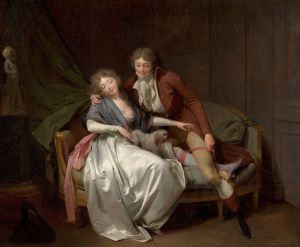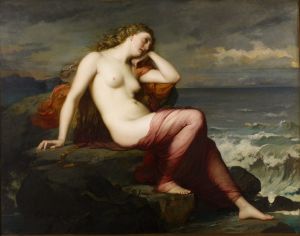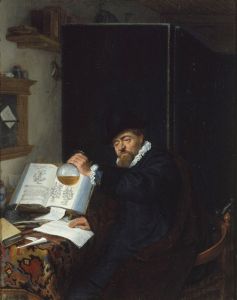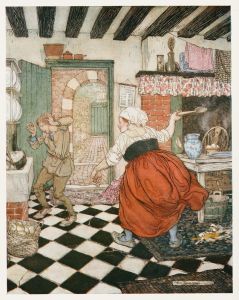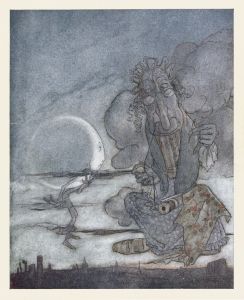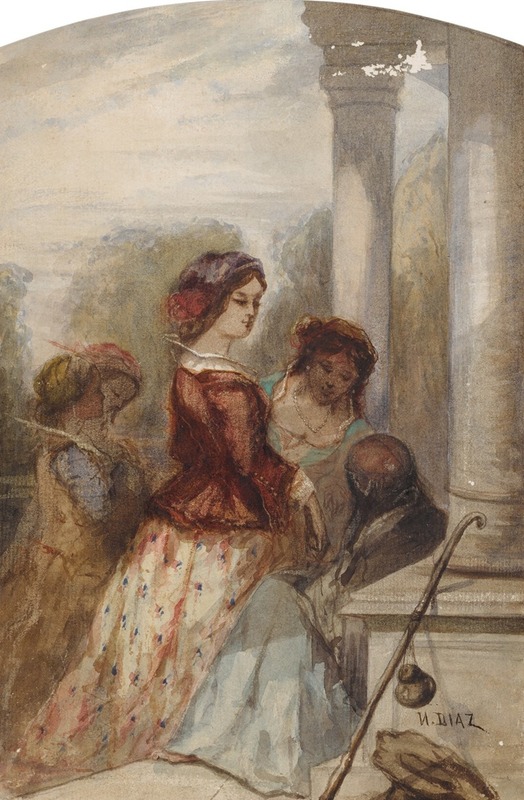
The fortune teller
A hand-painted replica of Narcisse-Virgile Diaz de La Peña’s masterpiece The fortune teller, meticulously crafted by professional artists to capture the true essence of the original. Each piece is created with museum-quality canvas and rare mineral pigments, carefully painted by experienced artists with delicate brushstrokes and rich, layered colors to perfectly recreate the texture of the original artwork. Unlike machine-printed reproductions, this hand-painted version brings the painting to life, infused with the artist’s emotions and skill in every stroke. Whether for personal collection or home decoration, it instantly elevates the artistic atmosphere of any space.
"The Fortune Teller" is a painting by the French artist Narcisse-Virgile Diaz de la Peña, who was an influential figure in the Barbizon School of painters. Born on August 20, 1807, in Bordeaux, France, Diaz de la Peña became known for his romantic and often exotic landscapes, as well as his genre scenes that frequently depicted gypsies and fortune tellers.
Created in the mid-19th century, "The Fortune Teller" exemplifies Diaz de la Peña's fascination with the mysterious and the exotic. The painting portrays a scene in which a fortune teller, often depicted as a gypsy woman, is engaged in the act of reading the palm of a young woman. The setting is typically rustic, with lush, detailed foliage and a sense of intimacy that draws the viewer into the scene.
Diaz de la Peña's use of color and light in "The Fortune Teller" is particularly noteworthy. He employs a rich palette, with deep greens and earthy browns dominating the background, while the figures are highlighted with warmer tones, creating a striking contrast. The artist's brushwork is both fluid and expressive, capturing the textures of the clothing and the natural environment with great skill.
The painting reflects the 19th-century European fascination with the "otherness" of gypsy culture, which was often romanticized in art and literature of the period. This fascination was part of a broader trend in Romanticism that sought to explore and idealize the exotic and the unknown. Diaz de la Peña, like many of his contemporaries, was drawn to these themes, and his works often feature gypsy figures as central characters.
"The Fortune Teller" is also significant for its composition and the way it engages the viewer. The intimate interaction between the fortune teller and her client creates a sense of narrative and invites the viewer to speculate about the story behind the scene. The expressions and body language of the figures are rendered with sensitivity, adding to the painting's emotional depth.
Narcisse-Virgile Diaz de la Peña's work, including "The Fortune Teller," played a crucial role in the development of the Barbizon School, which emphasized naturalism and the depiction of rural life. His paintings were well-received during his lifetime, and he exhibited regularly at the Paris Salon, where he earned several medals.
Today, "The Fortune Teller" is appreciated not only for its artistic qualities but also for its cultural and historical significance. It offers a glimpse into the 19th-century European imagination and the ways in which artists like Diaz de la Peña engaged with themes of mystery, exoticism, and human interaction.
In summary, "The Fortune Teller" by Narcisse-Virgile Diaz de la Peña is a compelling example of mid-19th-century genre painting, characterized by its rich color palette, expressive brushwork, and evocative subject matter. It remains an important work within the context of the Barbizon School and 19th-century French art.





